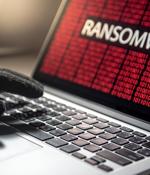Security News > 2021

Access management outfit BeyondTrust has urged organizations to remove admin rights from users, arguing that doing so would have at least mitigated more than 100 vulnerabilities in Microsoft products last year. There are businesses and groups out there that are pressured internally into handing people admin rights to keep folks working with awkward software deployments.

Access management outfit BeyondTrust has urged organizations to remove admin rights from users, arguing that doing so would have at least mitigated more than 100 vulnerabilities in Microsoft products last year. There are businesses and groups out there that are pressured internally into handing people admin rights to keep folks working with awkward software deployments.

In its 10th annual Risk Barometer, Allianz found that cyber incidents ranked third in a list of the most important global business risks for the upcoming year, coming in second behind risks stemming from the pandemic itself. A recent survey of 100 senior security professionals found that 70% of respondents have received pressure to produce cyber risk quantification for their business.

In the years since the Manifesto was first published, Agile has been adopted by domains outside of software development, including hardware systems, infrastructure, operations, and even business support to name a few. More recently, the cybersecurity industry has also benefited from implementing principles of the Agile Manifesto.

71% of office workers globally - including 68% in the US - admitted to sharing sensitive and business-critical company data using instant messaging and business collaboration tools, Veritas Technologies research reveals. The research shows this challenge is compounded by the amount of time employees spend using messaging and collaboration apps: time spent on tools such as Zoom and Teams has increased by 13% in the US since the start of the pandemic.

As working environments evolved, so did the methods of threat actors and other motivated perpetrators, as detailed in the SonicWall report. "The pandemic - along with remote work, a charged political climate, record prices of cryptocurrency, and threat actors weaponizing cloud storage and tools - drove the effectiveness and volume of cyberattacks to new highs. This latest threat intelligence offers a look at how cybercriminals shifted and refined their tactics, painting a picture of what they are doing amid the uncertain future that lies ahead.".

An alert issued on Tuesday by the FBI warns about an increase in PYSA ransomware attacks on education institutions in the United States and the United Kingdom. According to the FBI, PYSA attacks have been launched by "Unidentified cyber actors" against higher education, K-12 schools and seminaries in a dozen U.S. states, as well as the U.K. The threat actors behind PYSA attacks are known to encrypt data on compromised systems, but they also steal information from victims and threaten to leak it in an effort to increase their chances of getting paid.

Cybersecurity researchers have unwrapped an "Interesting email campaign" undertaken by a threat actor that has taken to distributing a new malware written in Nim programming language. Dubbed "NimzaLoader" by Proofpoint researchers, the development marks one of the rare instances of Nim malware discovered in the threat landscape.
![[Webinar] Oy Vey, We Hired a Large, Hairy Hacker…](/static/build/img/news/webinar-oy-vey-we-hired-a-large-hairy-hacker.jpg)
It's not every day that one of the best-known independent cybersecurity individuals joins a cybersecurity company. They're usually concerned with different parts of the cybersecurity puzzle - one providing platforms and tools to defend organizations, the other keeping them accountable and looking for blind spots in even the best security tools.

More than half of those surveyed reported 5G deployment delays caused by the impact of COVID-19 while more than a third reported future roadmaps delays. 92% expect to achieve 5G business goals within five years; larger carriers reported a focus on generating new revenue streams while supporting existing business to reduce operational costs and accommodate increasing demand.